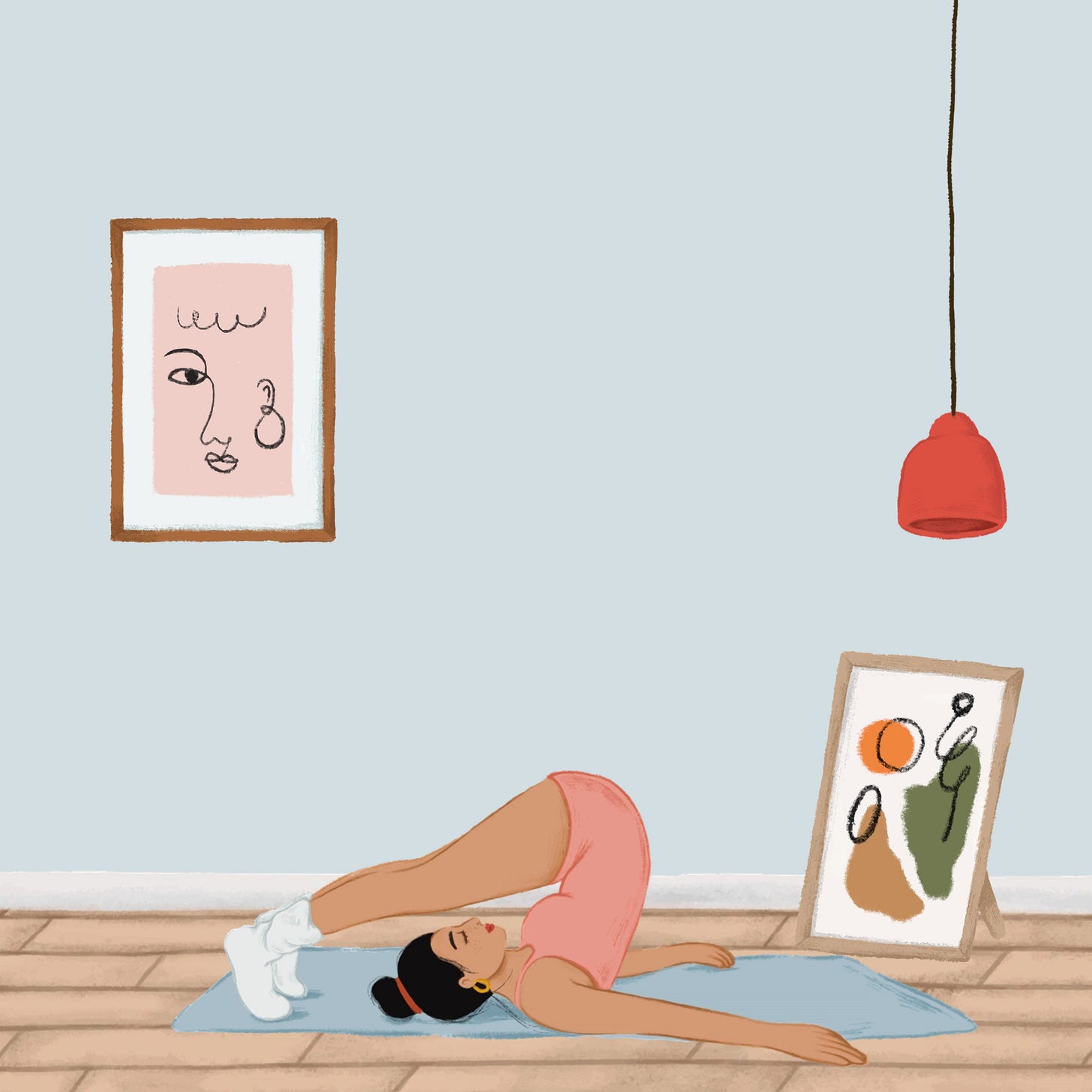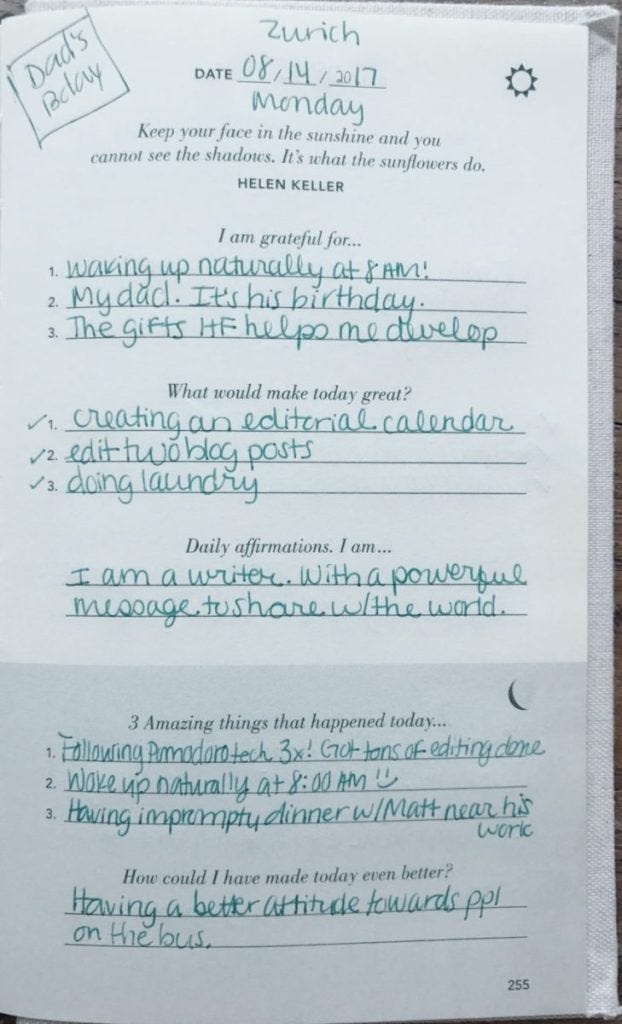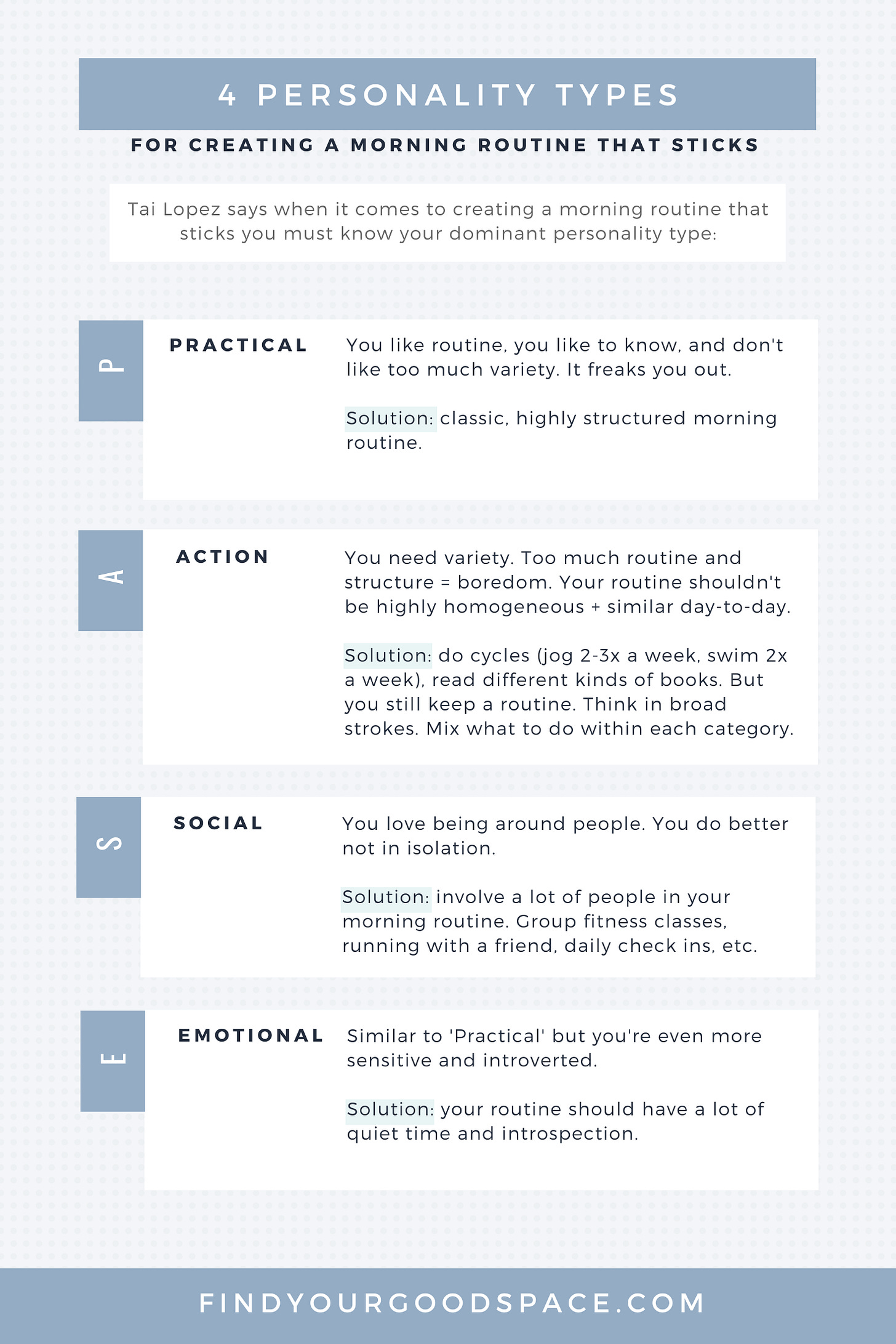How To Create A Morning Routine That Will Make You Thrive
A step-by-step guide to creating a morning ritual that helps you regulate your nervous system and start every day feeling good.
Many of us find ourselves distracted and overwhelmed by anxious thoughts and emotions. Like life’s a juggling act and the balls keep dropping. We often forget that we define who we are. We can choose which thoughts and emotions to identify with.
Most of us want to thrive—to wake up excited and create endless momentum with what we love to do. But in a world that keeps us overstimulated and overwhelmed, dysregulation has become the norm. This is survival mode. If you told me years ago that one day I’d jump out of bed, excited for my day, before 9:00 a.m., I’d laugh at you.
Are you in survival mode?
Getting from Surviving to Thriving
Today, I want to share with you one thing that had a massive impact on turning my life around. It's something immediately actionable and useful no matter who you are: a morning routine.
This has been a key to helping me go from being depressed to enjoying life again, building multiple businesses, and feeling a real sense of purpose. Before we continue, though, I want you to make two commitments to yourself right now:
1. Show up in life every day, whether you feel like it or not. Take action.
2. Prime yourself for joy every morning by investing time in what fills you up.
Read those two lines every morning if you have to. Those beliefs helped me shift everything.
A morning routine is an outward manifestation of faith. It’s an action that tells yourself and the universe you have a purpose—something to offer the world. This grows your confidence and momentum. By committing to filling your cup each morning, you’ll be able to become much more to yourself and those you love.
Redefining Success
People think becoming successful involves large amounts of money. It doesn’t have to. I’m showing you a way to have personal success using only time and focus. Focusing on personal success leads to success in other areas.
The purpose of this post is to help you shift how you approach life, start focusing again on what’s important, and take the reins back. Then, one day, we can meet for pasta (what? I love it!), and you can tell me how your life has completely changed.
Here’s what you’ll gain from this robust yet simple post:
1. Knowledge about the impactfulness of morning routines.
2. How to create your own (evening and morning). I list mine as an example, too.
3. Inspiration and insight into taking back your mornings and, essentially, your life.
If you don’t have time to read, download my free workbook now. It includes a summary of my morning routine post, more insights, and a workbook to guide you through creating a successful morning routine.
Benefits of a Morning Routine
“A morning routine sets the tone for the whole day, and if you do each day right, you’ll do life right.” — Cathryn Lavery
By beginning each day in the embrace of what fills you up, you tell yourself you matter. You’re choosing how you intend to exist on this planet, not living only to react to external demands on your time.
“Developing a morning routine allows you to assert your own authority over the day. You take charge of your own work-life balance by, in effect, paying yourself first. Too many of us do it the other way around and are left with no time and energy to invest by the time we get to ourselves. As a result, too many people end up feeling at the mercy of their work and family demands. Responsibilities overwhelm, and they end up continually stuck. When you lead with your own peace and well-being, however, much more is possible. Something essential changes when you begin directing your day rather than responding to it.” — Mark Sisson
A morning routine is an investment in your best self. As Thomas Oppong says, “Starting and maintaining a positive morning routine is an investment of a lifetime. It gives you structure, builds life-changing habits, and creates momentum for the rest of your day.”
A morning routine will create results for you whether you’re an entrepreneur or a mom (or both). Whatever your focus is, it’ll improve, and you’ll thrive.
Now that we’re excited about creating a morning routine… how do we actually do it? Keep reading for ideas and feel free to do as little or as much as feels right for you. The key is to start—even if it’s just five minutes.
Disclaimer: I created this routine before having a baby, so my routine is now pared down tremendously. That said, this is the routine that got me started, and I’ve had many parents find it helpful, often tweaking it to fit their unique needs and capacity.
Night Routine — How to Do It
“The time before you go to bed is an ideal time to prepare yourself for the morning. Bedtime rituals can make or break your morning routine.” — Thomas Oppong
To Do:
Write down your top items to complete the next day. This releases worry about what needs to get done.
Take note of what nighttime activities get you ready for bed (brushing teeth, washing face, etc)
Remove electronics from your sleeping area.
Think of activities that calm you (e.g., reading, drinking tea, taking a bath), and include some of these every night.
Here’s what I do:
Write down three things I want to accomplish the next day in my phone notes or productivity planner.
Brush my teeth and wash my face.
Leave my phone outside of the bedroom. — “Vivian Giang suggests that you declare your bedroom a ‘device-free zone’ and leave all tablets, smartphones, and other computer-related devices elsewhere.” (again from Thomas Oppong’s article).
Reflect on my day using my 5 Minute Journal.* — Here’s a picture of mine for reference (The bottom half, darker gray area with the moon, is what I fill out at night.):
This tool is excellent for when you feel like you’re not making progress (I have many times). You can flip back through its pages and adjust your perspective.
The point in reflecting is to claim your victories.
We’ve trained ourselves to see what’s wrong much quicker than finding what’s right.
Stop using devices with a screen 30 min to 1 hour before bed.
Read a physical book until I fall asleep. — Download my checklist for great nighttime book ideas.
On Eating
When I first wrote this post, I practiced intermittent fasting daily, eating at 12:00 p.m. and only until 8:00 p.m. This gives your stomach a break from digesting, helps you sleep better, and has many other health benefits. It may not work for everyone, but it did for me.
For variety’s sake, Tim Ferriss drinks 30g of plant protein 30 minutes after waking. This has proven health benefits as well. Protein increases your ability to focus and much more. I tried it for a few weeks, but it didn’t work as well for my body as the intermittent fasting did.
Since then, my focus has shifted from intermittent fasting to keeping my blood sugar stable, which involves eating a good breakfast. I enjoy recipes from The Glucose Goddess Method and Eat Beautiful. I’ve evolved my understanding of what my body needs and now focus on eating foods that nourish me.
I still follow Vivian Giang’s advice: “Don’t eat late. If your body is still digesting food when you’re trying to sleep, you’ll have a tougher time falling asleep and wake up feeling worse than if you just stayed hungry.”
Download my free guide to see other suggestions for creating your successful night routine.
Morning Routine — How to Do It
Morning routines will vary based on your personality type. This was an interesting twist (from Tai Lopez’s podcast) to the typical way most people approach routines.
I’m on the emotional/ practical spectrum. A structured morning and evening give me a sense of stability since my life is constantly changing (I’ve also since been diagnosed with ADHD). Because of his work, my husband and I have lived abroad on and off for the last 3 years (in small corporate housing). Not knowing where we’ll be one year to the next makes this routine perfect for me.
Which is your dominant personality type?
Once you know, get crystal clear on how you want to feel. I wanted to feel motivated, peaceful, and clear.
Then, I wrote a makeshift morning routine in my journal. For the next two weeks, I removed items, added others, and rearranged the order. Once I felt complete motivation, peace, and clarity, I knew I found the perfect routine. By the end of two weeks, I didn’t want to return to unintentional mornings again.
To Do:
Figure out your personality type.
Write down things that make you feel centered and fulfilled.
Create a draft morning routine and commit to practicing it for 2 weeks.
Change, add, or remove when things don’t feel right.
Keep tweaking until you feel complete peace.
Protect your mornings. No interruptions, email, or social media.
Here’s what I do:
Wake up. — What time will vary. I’m up by 8 am. A lot of writers wake up around 5:00 am. Do what works for you. There’s no right or wrong.
Say a deep prayer to God. — I start by saying what I’m grateful for then have a conversation with Him. At the end, I review my big-picture goals and thank Him for allowing them to become reality.
Study scriptures.
Meditate for 15 minutes using the Headspace app. — This is a game-changer. You’ll learn to separate yourself from your emotions and thoughts. (Check out this article on the science of what 15 minutes daily does to your brain.)
Most people can’t meditate for five minutes. Heck, I was one of them. But once I started reminding myself of my “why,” everything changed. I wanted to become a better wife, a higher-frequency person, and a better writer.
Write in my 5 Minute Journal. — Write three things you’re grateful for. Then, list three things it would be amazing to complete and a daily affirmation. (See the night routine section for a picture.)
Read from an inspirational book or listen to a short podcast episode.
Do my daily pages. — Write three pages of stream of consciousness. I write one page in my journal and then go to 750words.com. This lets you put anxieties and worries onto paper and free your mind.
The site gives you an in-depth look at your emotions using pie charts and statistics on your mindset. You also get badges for every benchmark you meet, plus monthly challenges. I love it.
Work on my most important creative project. — This is when I start using the Pomodoro technique. I complete a full round of four 25-minute stretches of concentrated work on one project. Then do it again switching to a new project.
When Life Happens
“You’re going to have to push yourself, even when every fiber of your being is telling you to quit. You’re going to have to get out of bed when you’d rather just lie there.” — Tom Bilyeu
Tim Ferriss said sometimes he can’t do everything in his morning routine. He tries to do as much as possible when something comes up and then keeps moving. Life happens.
Side note: Having a morning routine won’t stop bad days. Even after doing mine, I’ve still felt unmotivated. Since writing this, I’ve had a baby and was late diagnosed with ADHD, so my routine has changed a lot—and I’m learning to be okay with adapting.
The key is to keep going even if you don’t feel like it.
Rewiring your brain creates resistance. But, by doing a daily morning routine, you’ll be able to handle life better. You’ll persevere through tasks and situations even when your emotions aren’t agreeing.
Today, my morning started perfectly. Yet, I ended up in the email rabbit hole, became frustrated with website issues, and avoided my writing. My head started to fog (which it does when I’m overwhelmed). I kicked and screamed the whole day even though I did my routine.
Go easy on yourself during these moments. Take inventory of your day and note what you can do better next time. Then, laugh at some TikTok videos (as if I do that, psh).
Conclusion
“Being successful comes with a litany of things that you’re not going to want to do, but you’re going to have to do them anyway.” — Tom Bilyeu
Start using your mornings to fuel yourself, and everything else will improve. Consistently doing so will also shift your mindset.
Always remember your ‘why’. Commit to improvement. This is how you’ll find yourself changed. An intention is everything, my friends. The most crucial part of success is reminding yourself of your intention daily.
Learn to value your time and what you do with it. People will only respect you as much as you respect yourself.
Make your routine fit your personality and life. It doesn't matter how long it is as long as you feel uplifted and fulfilled.
And whatever you do, protect your mornings! As Benjamin Hardy says, “Don’t check your social media or email until after your 3 hours of deep work. Your morning time should be spent on output, not input.”
Take away:
Figure out why you want to make your morning routine. What are you hoping to achieve or become by doing it? Leave a comment!
*This post was written before I had a baby. Now, I do a quick reflexology foot massage and read until I fall asleep instead of using The 5-Minute Journal.
Originally published at findyourgoodspace.com





